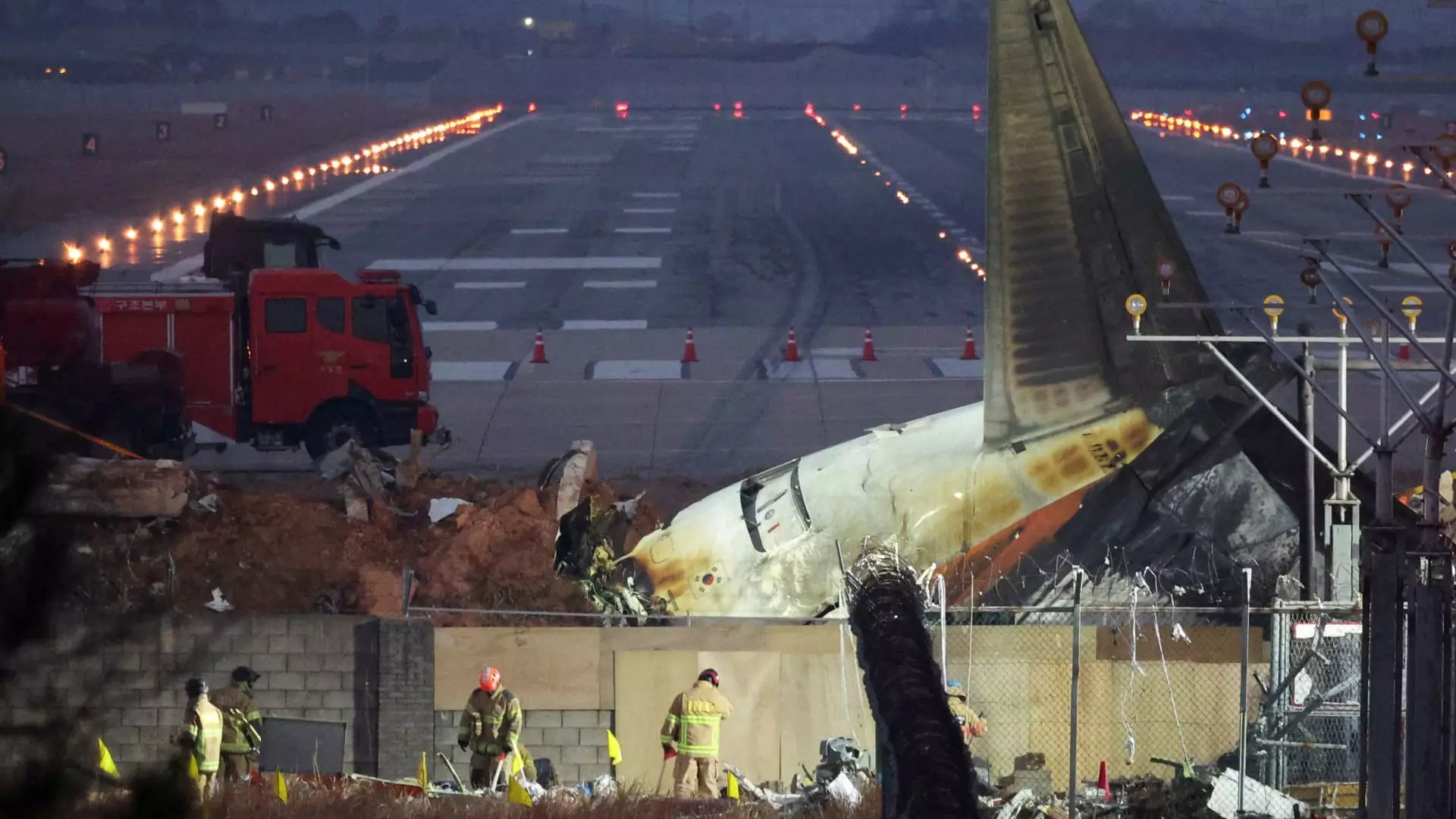The recent crash involving Jeju Air Flight 7C2216 has provoked serious discussions regarding airport infrastructure and safety standards. On a fateful Sunday, the Boeing 737-800 was attempting to land after an overnight flight when it tragically collided with a mound of dirt and a concrete wall located beyond the runway. This incident has resulted in a heartbreaking loss of life, with only two of the 181 passengers surviving. The flight’s belly landing suggests critical issues involved, most notably the failure to deploy flaps and landing gear, an act that could have significantly influenced the aircraft’s ability to decelerate effectively.
The positioning of the concrete wall is now at the forefront of the investigation, with aviation experts highlighting its potential role in exacerbating the severity of the crash. Todd Curtis, an aviation safety veteran with significant expertise from Boeing, underscores the danger posed by such obstructions. He contends that the presence of a wall at the end of the runway likely made the task of safely halting the aircraft nearly impossible—an assessment echoed by other industry professionals. The fact that such structures can be engineered to be crushable or frangible remains a significant point of contention.
In contrast, many airports around the world, including LaGuardia in New York, utilize engineered material arresting systems (EMAS). These vital safety features are designed to absorb energy and aid in stopping aircraft that may overrun runways. The absence of similarly robust systems at Muan International Airport raises questions about adherence to modern safety standards and the effectiveness of their current airport designs.
The investigation into the crash is anticipated to be an extensive and thorough process. Authorities will examine a variety of factors, including maintenance records, pilot schedules, and cockpit voice recordings. Initial findings indicate a potential bird strike might have led to a loss of engine power, although investigators caution that it’s too early to draw definitive conclusions. As aviation experts work tirelessly to gather evidence and analyze the crash’s contributing factors, they must consider not only the design shortcomings but also pilot actions and mechanical reliability.
The Jeju Air disaster represents a crucial moment for aviation safety advocates, as it highlights the dire need for a reevaluation of runway safety protocols. Experts warn that the tragic loss of life in this incident, South Korea’s worst aviation disaster to date, could have been mitigated had better safety measures been in place at Muan International Airport. This discussion is not merely about attributing blame; it is an opportunity to advance aviation safety standards globally.
In the wake of the tragedy, industry stakeholders must prioritize engineering solutions that allow for safer airport designs, particularly in areas surrounding runways. Upgrading infrastructure to include more effective arresting systems can help prevent similar calamities. Ultimately, as aviation continues to evolve, the industry must learn invaluable lessons from past disasters to ensure that the safety of travelers remains paramount.


Leave a Reply